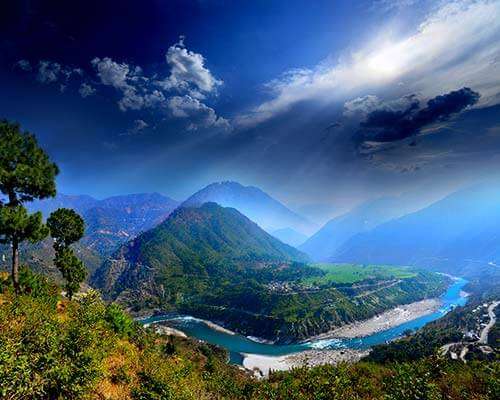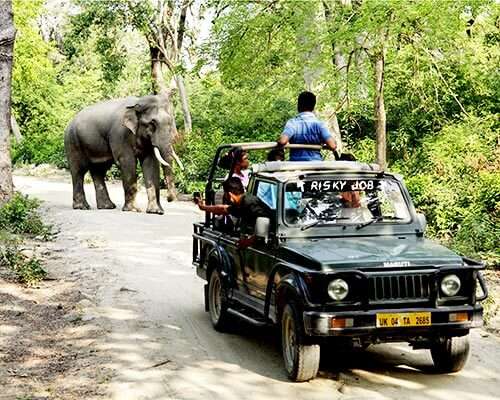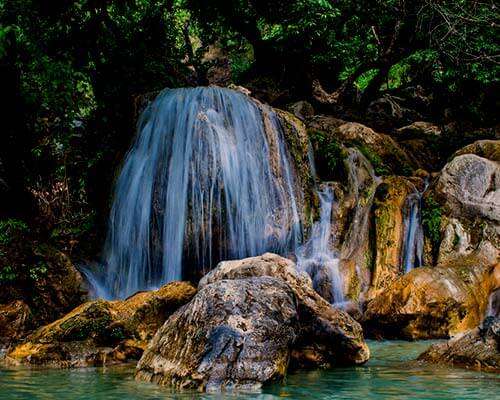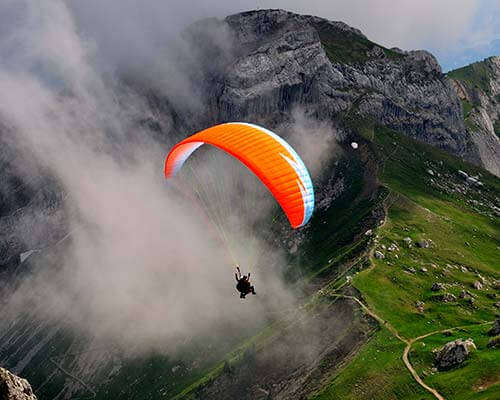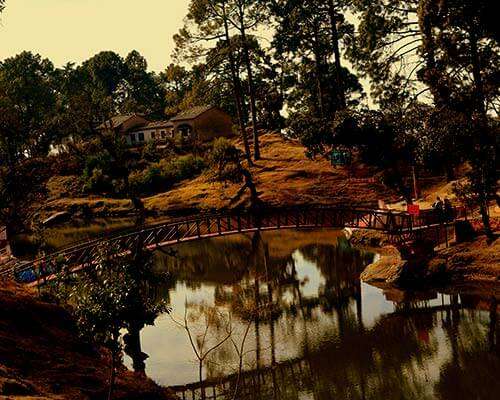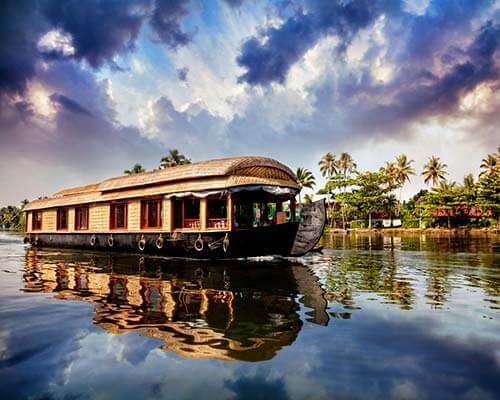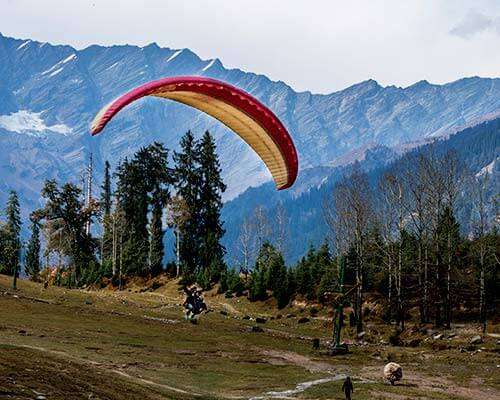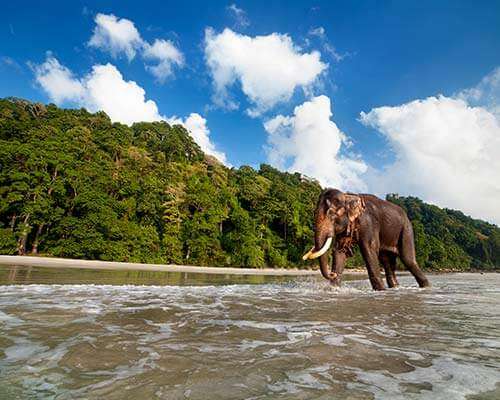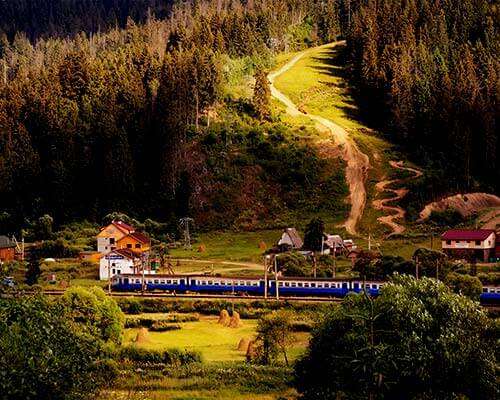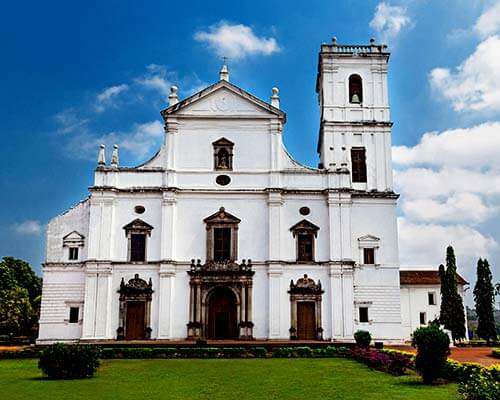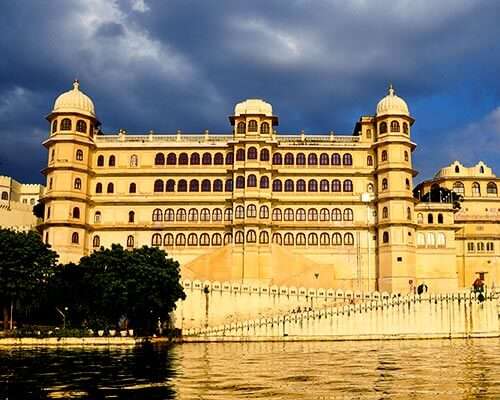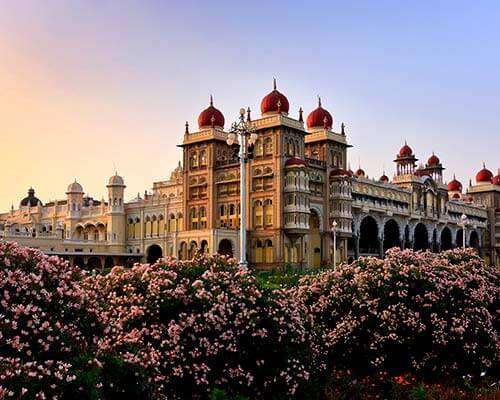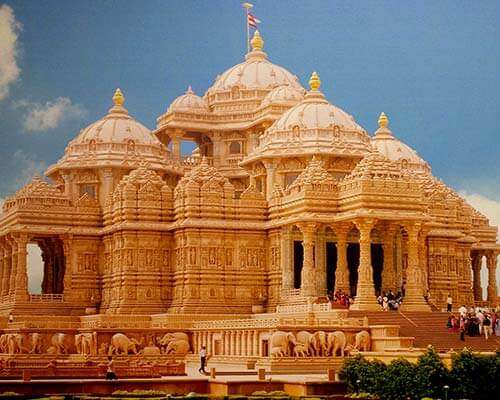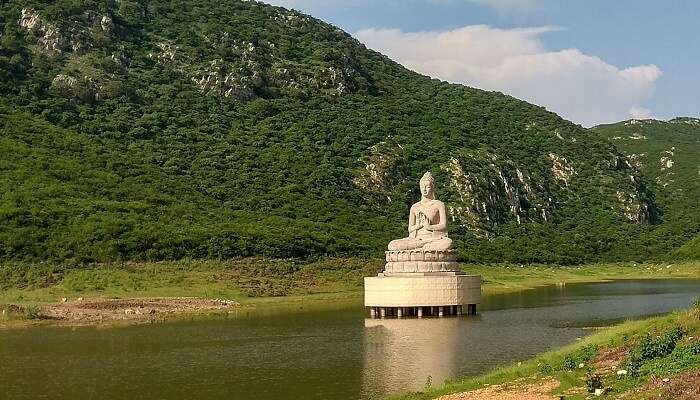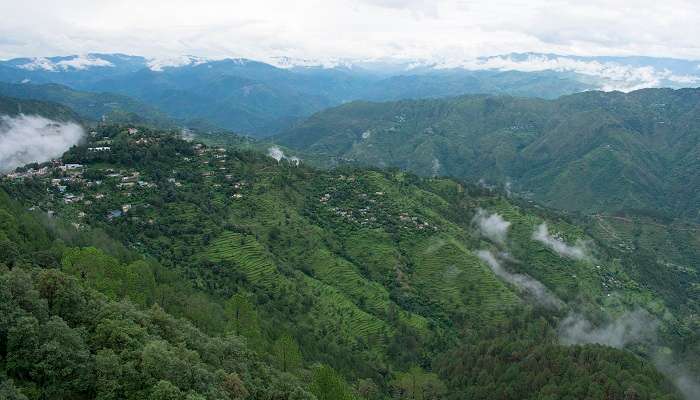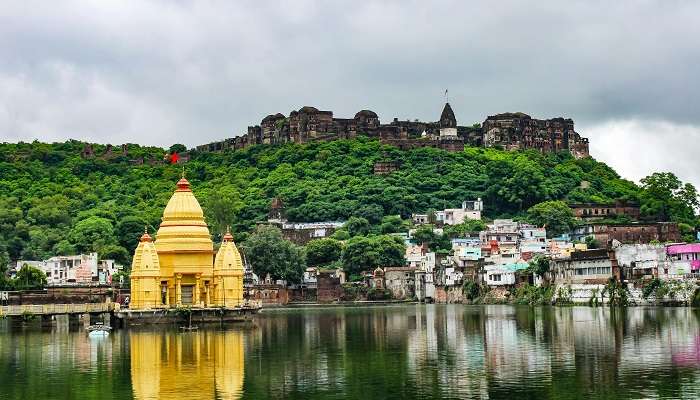Char Dham Yatra 2025: Dates, Timings, and Complete Guide
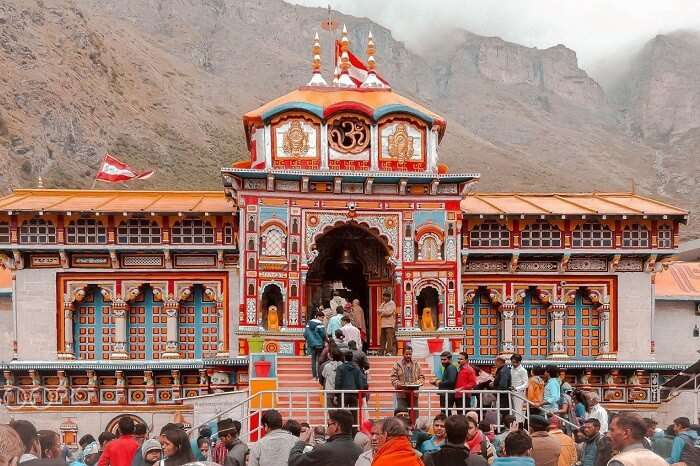
India is a land of Devis (Goddesses) and Devatas (Gods). The number is an astounding 330 million and no less! And so, not surprisingly, the country is replete with holy shrines and temples. Adorned with the remnants of the rich Hindu mythology, India has clusters of pilgrimages spread across its vast boundaries. Amongst these, the Char Dham Yatra holds a significant spot.
Opening dates of Char Dham Yatra 2025
The Char Dham Yatra is an essential pilgrimage to four sacred shrines in the Indian Himalayas: Yamunotri, Gangotri, Kedarnath, and Badrinath. Opening dates of Char Dham Yatra 2025 mark the beginning of the pilgrimage season, generally occurring in May, depending on auspicious timing and regional traditions. Here is the updated date:
| Destination | Date |
|---|---|
| Yamunotri Temple | 30 April 2025 (Tentative) |
| Gangotri Temple | 30 April 2025 (Tentative) |
| Kedarnath Temple | 2 May 2025 (Tentative) |
| Badrinath Temple | 2 May 2025 (Tentative) |
Chardham Yatra Closing Dates 2025
| Destination | Date |
|---|---|
| Yamunotri Temple | Will Update Soon |
| Gangotri Temple | Will Update Soon |
| Kedarnath Temple | Will Update Soon |
| Badrinath Temple | Will Update Soon |
Yamunotri Temple Timing
| Timing | Time |
|---|---|
| Morning Darshan Timing | 6:15 AM to 2:00 PM |
| Evening Darshan Timing | 3:00 PM to 9:30 PM |
| Aarti Timing | 6:00 AM and 7:45 PM |
Gangotri Temple Timing
| Timing | Time |
|---|---|
| Morning Darshan Timing | 6:00 AM to 1:00 PM |
| Evening Darshan Timing | 4:00 PM to 8:00 PM |
| Aarti Timing | 6:30 AM and 7:30 PM |
Badrinath Temple Timing
| Timing | Time |
|---|---|
| Morning Darshan Timing | 4:30 AM to 1:00 PM |
| Evening Darshan Timing | 1:00 PM to 9:00 PM |
| Aarti Timing | 4:30 AM and 8:30 PM |
Kedarnath Temple Timing
| Timing | Time |
|---|---|
| Aarti Timing | 6:00 AM to 8:30 PM |
Char Dham Yatra 2025
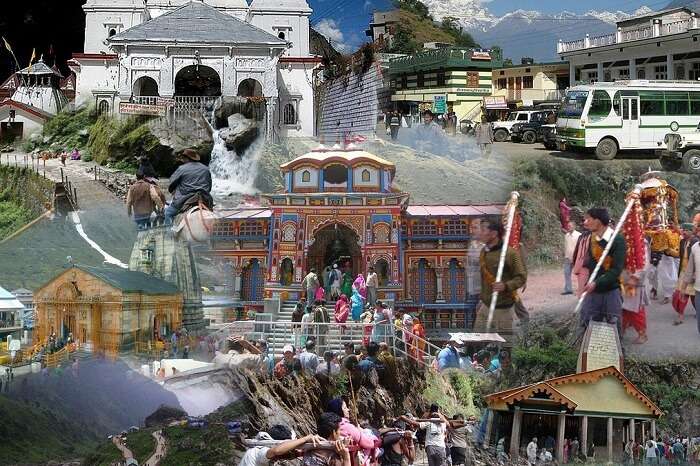
The Char Dham Yatra represents a significant pilgrimage in India, encompassing four revered sites: Badrinath, Kedarnath, Yamunotri, and Gangotri. Each location holds unique spiritual importance, drawing countless devotees seeking divine blessings. This sacred journey not only promotes spirituality but also offers breathtaking natural beauty, fostering a deep connection with nature.
Uttarakhand Holiday Packages On TravelTriangle
1. Yamunotri Dham Yatra
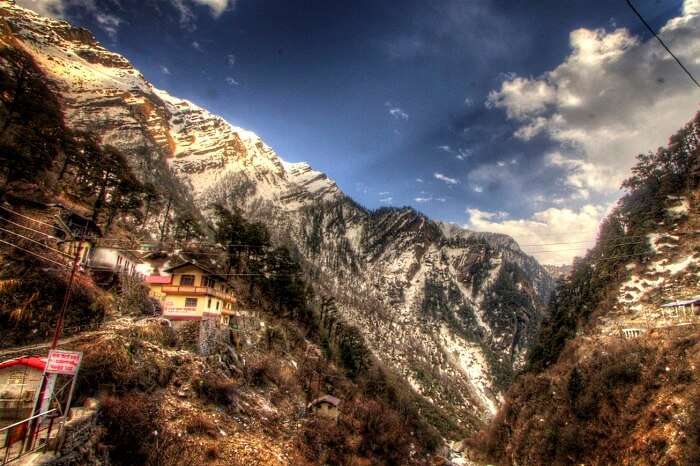
Yamunotri, the seat of Goddess Yamuna, is the source of the Yamuna River. The actual source and glacier is located at an altitude of 4421 meters above the sea level, about 1 km further up. But it is not easily accessible. For the same reason, the shrine has been located at the Yamunotri Temple at the foot of the hill. Pilgrims offer prayers at the temple itself.
Legend: According to a popular legend, sage Asit Muni – who had his hermitage here – bathed daily in both Ganga and Yamuna. When, due to his old age, he could no longer go to Gangotri, a stream of River Ganga appeared opposite Yamunotri for him to bathe.
Places to visit:
Yamunotri Temple: Situated in the Garhwal hills at an altitude of 3291 meters above the sea level, the temple was built in the 19th century by Maharani Gularia of Jaipur. Goddess Yamuna is represented here in the form of a silver idol.
Opening hours:6 am – 8 pm; 1st week of May – Diwali
Aarti time: 6:30 pm – 7:30 pm
- Saptrishi Kund: The glacier is the actual source of Yamuna River and is located at an altitude of 4421 meters above the sea level. The strenuous trek to Saptrishi Kund involves a day for acclimatization at the temple.
- Surya Kund: It is one of many thermal springs in the region. The Goddess Yamuna is believed to be the daughter of Surya (the Sun god) and Sangya.
- Divya Shila: It is a powerful rock pillar near the Surya Kund at Yamunotri. As a ritual, the pilgrims offer prayers to the pillar before entering Yamunotri.
Seat of: Goddess Yamuna
Altitude: 3291 meters
District: Uttarkashi
State: Uttarakhand
2. Gangotri Dham Yatra
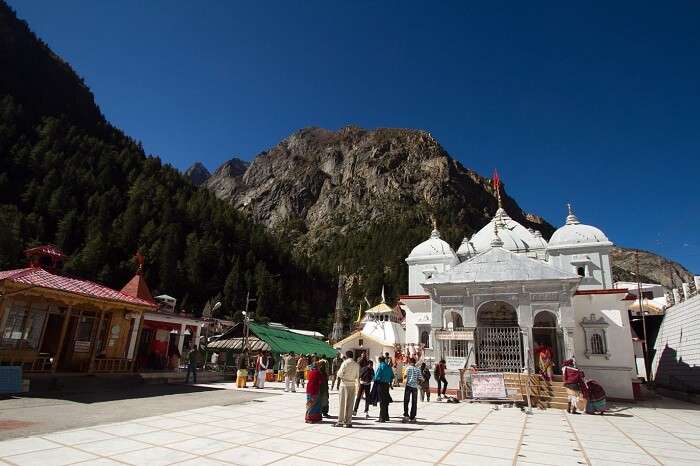
Gangotri – the seat of Goddess Ganga – is frequented by millions of pilgrims each year. The Gangotri Dham is set 19 km from Gaumukh – the place where Ganga River originates. From Gaumukh in the Gangotri Glacier, the river flows as Bhagirathi up to Devprayag. Here, it merges with Alakananda and forms Ganga as we know it.
Legend: According to the Hindu mythology, Goddess Ganga took the form of the river to cleanse the ashes and liberate the souls of King Bhagiratha’s predecessors when Bhagiratha meditated to please the goddess. To minimize the impact of her fall, Lord Shiva placed her in his matted locks. At the point of impact, the goddess came to be known as Bhagirathi.
Another legend talks of Ganga as beautiful woman born out of Lord Brahma’s kamandalu (water vessel). It is said that Lord Brahma washed Lord Vishnu’s feet after the latter killed the demon Bali in his reincarnated form of Vaman. Lord Brahma, thereafter, collected this water in his kamandalu. And Goddess Ganga was born out of it.
Places to visit:
Gangotri Temple: Built in the 18th century by the Gorkha General Amar Singh Thapa, the temple is home to the shrine of Gangotri.
Opening hours: 6:30 am – 2 pm, 3 pm – 9:30 pm; 1st week of May – Diwali
Aarti Time: 3.00 PM to 9.30 PM
- Bhagirath Shila: It is believed to be the holy rock where King Bhagirath prayed to Lord Shiva.
- Submerged Shivling: This Shivalingam is submerged in the waters of River Bhagirathi at Gangotri. According to the Hindu mythology, it is here that Lord Shiva sat to receive Goddess Ganga in his locks.
- Pandava Gufa: A 1.5 km trek from Gangotri takes you to the Pandava Gufa where the Pandavas are believed to have meditated and rested en route Kailash.
Seat of: Goddess Ganga
Altitude: 3048 meters
District: Uttarkashi
State: Uttarakhand
3. Kedarnath Dham Yatra
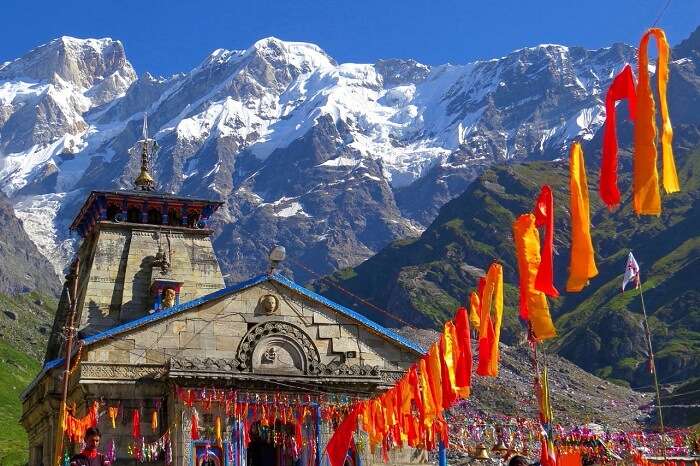
Located near the head of the River Mandakini in the Himalayas, Kedarnath is flanked by breathtaking snow-clad mountains. The city is named after King Kedar who ruled in the Satya Yuga. The saintly king is believed to be the ruler of the 7 continents. His daughter – Vrinda – is believed to be a partial incarnation of the Goddess Laxmi.
Legend: According to a popular legend, Nar & Narayana (two incarnations of Lord Vishnu) prayed in front of a Shivalingam in Badrikashraya of Bharat Khand. Pleased by their devotion, Lord Shiva granted them a boon. The duo requested Shiva to take up a permanent seat as a Jyotirlinga at Kedarnath so as to free the devotees of Lord Shiva from all their miseries.
Places to visit:
Kedarnath Temple: Built in the 8th century by the Hindu philosopher Adi Shankaracharya, the Kedarnath Temple is known to be built in the same vicinity as the ancient temple built by the Pandavas. A conical rock formation inside the temple is worshipped by the devotees as Sadashiva, a form of Lord Shiva.
Opening hours: 6:30 am – 3 pm, 5 pm – 9:30 pm; May – October
Aarti Time: 5.00 PM to 9.30 PM
- Gandhi Sarovar: The lake is believed to the place from where Yudhishthir – the eldest Pandava – departed to heaven.
- Shankaracharya Samadhi: Located very close to the Kedarnath Temple, the place is believed to be the place where Adi Shankaracharya took Samadhi.
- Bhairon Temple: Located 1 km from the Kedarnath Temple, the Bhairon Temple is believed to be the home to the protector of the Kedarnath Temple and valley.
Seat of: Lord Shiva
Altitude: 3553 meters
District: Rudraprayag
State: Uttarakhand
4. Badrinath Dham Yatra
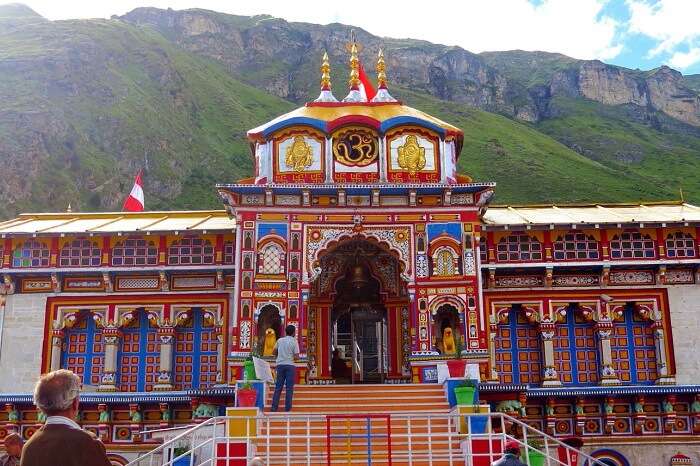
The main deity here is the Lord Vishnu, worshipped in his aspect of Badrinarayan. This Dham is the only one that is a part of both the original Char Dham and the Chhota Char Dham circuits.
Legend: According to the Hindu epic Mahabharata, Badrinath is the place where Nar & Narayana – the dual forms of Lord Vishnu – meditated. The holy town has also been mentioned as a destination that the Pandavas crossed en route to heaven. Another popular legend tells that Sage Vyasa authored Mahabharata at a cave in Mana, a destination approximately 4 km from Badrinath.
Places to visit:
Badrinath Temple: The story goes back to the time of Shankaracharya who discovered a black Saligram stone image of Lord Vishnu in the form of Lord Badrinarayan. He enshrined the same in a cave near Tapt Kund hot springs. In the 16th century, the king of Garhwal moved the stone idol into the present day temple.
Opening hours: 4:30 am – 1 pm, 4 pm – 9:00 pm; May – October
Aarti Time: 10.30 AM to 11.00 AM
- Neelkanth: The ‘Garhwal Queen’ is a snowy peak that forms a pyramid-like background to the Badrinath Temple. The peak, 6597 meters above the sea level, is the first place to receive the sun’s light in the region.
- Tapt Kund: The abode of Lord Agni, Tapt Kund is a hot spring that is famous for its medicinal properties. Surya Kund and Narada Kund are also present in the vicinity.
- Vasudhara Falls: The 400 feet high waterfalls are located 4 km from Badrinath in the Mana Village. It is believed that the water of the falls will turn away from the visitors who are not pure at heart.
Seat of: Lord Vishnu
Altitude: 3133 meters
District: Chamoli
State: Uttarakhand
Mata Murli Temple, Yogadhyan Badri, Alka Puri, Bheem Pal, Sheshnetra, Brahma Kapal, and Satopanth are the other nearby attractions.
Why Should You Go For Char Dham Yatra?

Nestled amongst the peaks of Himalayas in Uttarakhand, Char Dhams are the four holy places of Hindu Pilgrimage. The four sites that together make the Hindu pilgrimage are; Yamunotri, Gangotri, Kedarnath, and Badrinath. Each and every of these 4 locations are sacred in Hindu religion. It is believed that whosoever visits these holy shrines once in their lifetime, achieves salvation or Moksha.
When Should You Go For The Char Dham Yatra?

The Char Dham Yatra opens on the day of Akha-Trij or Akha Teej (in May) and closes for winter on Bhai-Bij (2 days after Diwali). However to beat the heavy rush of early May & June and to avoid any route blocking due to heavy rainfall in late July & August, it is best to take the Char Dham Yatra in early July and September.
How Difficult Is The Char Dham Yatra?

Varying climate, poor road conditions, and frequent landslides make this pilgrimage both strenuous and difficult. The temperatures may fall to as low as 1° C at night in Kedarnath and go as high as 40° C after a few hours. So, you will have to carry thick woollens for extremely cold temperatures as well as light fabrics for hotter places.
But regardless of all the difficulties and hardships of the arduous pilgrimage, millions of pilgrims flock in and take up the Char Dham Yatra annually. So, if you have faith in the gods & goddesses and wish to offer prayers to them in their known abodes, it is time to head for a Char Dham Yatra.
Looking To Book A Holiday Package?
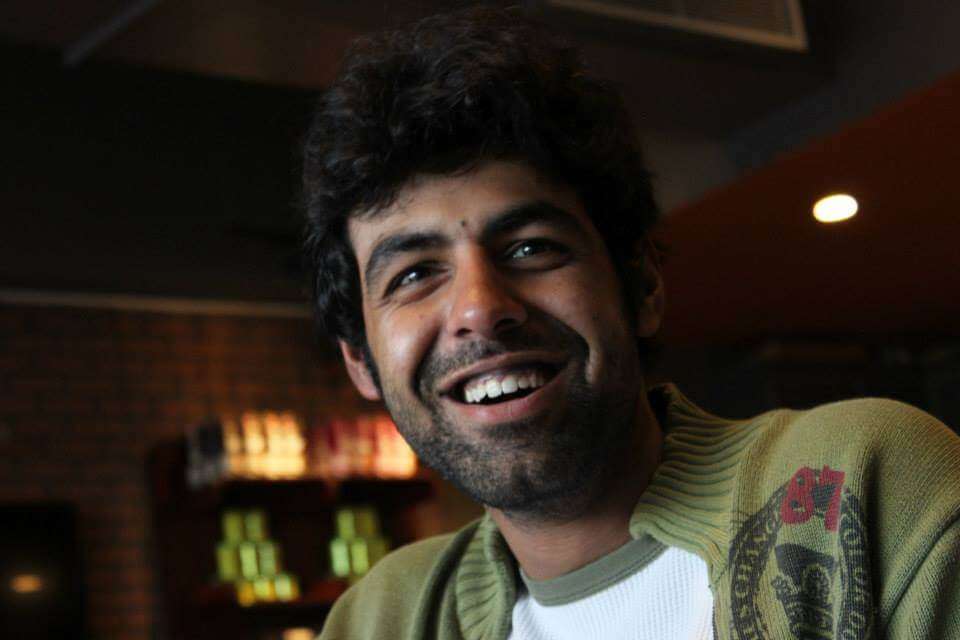
Kushal is a communication strategist, with 5+ years of experience in creating communication for diverse industries. His passion for helping the readers comes from his prior experience of running a travel agency with his dad. And he does that by addressing the actual travelers’ pain points in his blogs. And his work at TravelTriangle has also earned him multiple invites to speak about travel blogging at conferences & seminars. When he is not creating marketing strategies or content, he can be found reading about Harry Potter, DC, Marvel, or other anime. Find him on other social media channels here:

